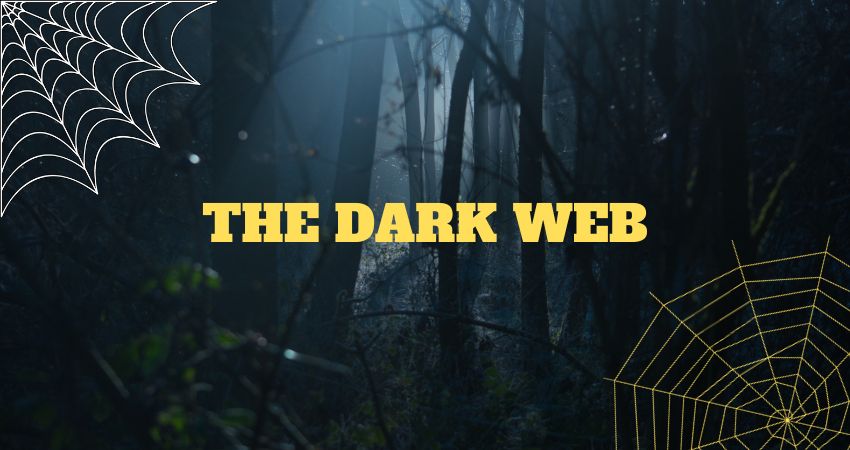Table of Contents
Introduction
In the vast realm of the internet, there exist layers that are often concealed from the everyday user. Among these, the dark web stands out as a mysterious and intriguing dimension. In this blog, we’ll embark on a journey to explore the enigmatic dark web. We’ll unravel its unique characteristics, delve into the means of accessing it, and take a closer look at the diverse content it harbors. Additionally, we’ll ponder the ethical and security concerns that surround its use. By the end of this exploration, we hope to demystify the dark web while encouraging responsible online behavior.
Understanding the Layers of the Internet
Surface Web
Let’s start with the familiar surface web. This is the part of the internet we use daily. It includes websites that are openly accessible and indexed by search engines like Google. These are the sites we visit for news, social media updates, online shopping, and more.
Deep Web
Beyond the surface web lies the deep web. This layer comprises content that isn’t indexed by conventional search engines. It includes databases that require passwords, private email accounts, and content that’s hidden behind paywalls, like subscription-based journals. The deep web remains hidden from casual internet users and can only be accessed with specific credentials.
Dark Web
Now, onto the dark web, which is our primary focus. The dark web is a concealed part of the internet, renowned for its anonymity and encryption. Websites on the dark web have “.onion” domains and can’t be reached using typical web browsers like Chrome or Firefox.
Accessing the Dark Web
Tor Browser
The Tor network, short for The Onion Router, is the most popular gateway to the dark web. It ensures anonymity by routing your online traffic through a series of volunteer-operated servers. This makes it extremely challenging to trace your online activities. To access the dark web, users typically download and install the Tor Browser, a customized version of Firefox designed to navigate the Tor network.
Alternatives to Tor
While Tor is widely used, there are alternatives such as I2P (Invisible Internet Project) and Freenet. These networks also offer anonymity, each with its own unique features and purposes. The choice of network depends on the user’s specific needs and preferences.
Dark Web Content
Marketplaces
One of the most notorious aspects of the dark web is its illegal marketplaces. These platforms facilitate the trade of illegal goods and services, including drugs, counterfeit documents, and hacking tools. Infamous marketplaces like Silk Road and AlphaBay have made headlines for their illicit activities.
Forums and Communities
The dark web hosts a myriad of discussion forums and communities covering a wide range of interests. Users often adopt pseudonyms, fostering candid and unfiltered discussions. These forums play a significant role in facilitating information exchange within the dark web.
Whistleblower Platforms
The dark web provides a haven for whistleblowers aiming to expose sensitive information while safeguarding their identity. Platforms like SecureDrop and WikiLeaks have been instrumental in leaking classified documents and uncovering government and corporate misconduct. Nevertheless, the ethical dilemmas surrounding these platforms cannot be ignored.
Dark Web Threats
Cybercrime
Cybercrime is a pervasive threat within the dark web. It encompasses various illicit activities such as hacking-for-hire, the sale of stolen data, and ransomware-as-a-service. The dark web’s underground economy fuels these activities, making it a hub for cybercriminals.
Illegal Activities
The dark web is rife with illegal activities, including drug trafficking, firearms sales, and human trafficking. The anonymity offered by the dark web provides a conducive environment for these criminal enterprises to thrive.
Privacy and Security Concerns
Venturing into the dark web comes with inherent risks. Law enforcement agencies globally are closely monitoring dark web activities. Users must exercise caution to safeguard their identity and privacy. Striking the right balance between privacy and security is paramount.
Myths vs. Reality
Dispelling Common Misconceptions
It’s essential to dispel misconceptions about the dark web. Contrary to popular belief, not everything on the dark web is illegal, and not all its users are malicious. Legitimate uses, like secure communication and accessing censored information, also exist within this realm.
Dark Web vs. Deep Web
Distinguishing between the dark web and the deep web is vital. While both are hidden from traditional search engines, the deep web primarily comprises legitimate, private content. Understanding this distinction is key to navigating the internet safely.
The Ethical Debate
Balancing Freedom of Speech and Illicit Activities
The dark web sparks profound ethical discussions. On one hand, it champions freedom of speech and provides refuge for individuals living under oppressive regimes. On the other hand, it hosts illegal activities that harm society. Striking a balance between these considerations is an ongoing and complex debate.
Regulation and Law Enforcement
Governments and international organizations are actively working to regulate the dark web and combat illegal activities. However, the decentralized and anonymous nature of the dark web poses significant challenges for law enforcement agencies worldwide.
Conclusion
In conclusion, the dark web is a mysterious realm within the internet that merits exploration. While it offers anonymity and a platform for free speech, it also harbors illegal activities and presents security risks. Understanding the dark web is vital for making informed decisions about online behavior and engaging in the ongoing ethical debates surrounding its existence. As the internet evolves, so too will the dark web, ensuring that it remains a subject of continued interest and scrutiny.
Read More Articles
Don’t Be a Victim: Protect Your Online Privacy
Passwords Are Dead: Alternatives for Strong Security
Phishing Attacks: Recognize and Avoid
Internet of Things (IoT) Security Challenges
Hacking Explained: A Beginner’s Guide

